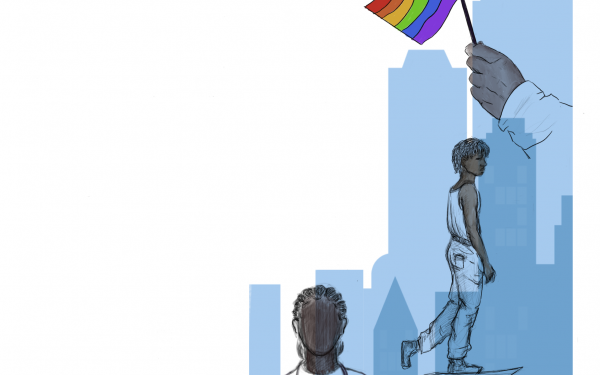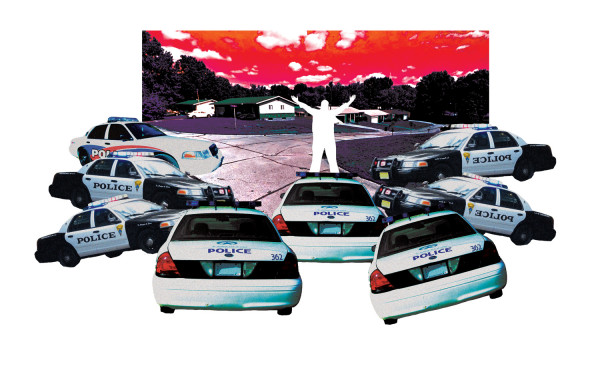Confronting Discrimination in All Its Forms
Sparking Conversations about the Racism and Misogyny One Faces as a Woman of Colour
If you study in the humanities or in the arts, you have hopefully come across the word “intersectionality,” a term that sounds like it has more to do with traffic than with the politics of things like race, gender and sexuality.
Many people exist at the intersections of such hierarchies, negotiating who, where and how to be in a society that does not like to discuss the inequalities it perpetuates.
If you are one of those strangely capitalized entities, like a Woman of Colour, you find yourself constantly navigating spectrums of discomfort in speaking to others about something as simple as where to have lunch.
“Oh, of course you’re vegetarian,” people smile knowingly. “I forgot.” And if you decide to reply instead of letting it be—if you have the energy and the good mood to reply that day—you say, “Yes, but it’s not religious, my parents eat meat.” Or you ask them, “Sorry, what did you forget?”
And when you end up at an Indian restaurant and someone gushes about a dish but not without cautiously looking at you first, you pretend it’s nothing.
Weirder, though, than having a classmate comment on how it’s easier to get published if you’re “exotic,” weirder than watching bindis become a fashion statement, weirder even than hearing your new dentist wonder why you don’t have an accent, is realizing that the people closest to you—the friends and family you choose to spend your time with—often don’t get it.
There is no way to ensure I will convince some relatives of mine that the unnecessary and inhumane police response to this summer’s protests for justice with regards to the murder of Michael Brown in Ferguson, Missouri, was a perfect example of systematic racism.
The fact that such events continue to serve as testaments to an institutionalized war against non-whites, fuelled by armed white authorities who are getting away with their crimes and who will never have to deal with the reality of racial discrimination, is not yet enough to convince them.
There is no way to convince some men that condescension towards a woman in a distinctly gendered fashion because she happens to have an emotional reaction to something is called sexism, and it is enraging in the same dark way that all microaggressions are.
There is no well-worn path to convincing a classmate that conflicts in the Middle East do not exist because Islam is “barbaric,” “primitive,” “backwards” or any one of the numerous racist terms that people continuously use to blind themselves to facts.
And there is no way to make sure the firefighter in uniform who thinks he’s entitled to comment lewdly on my dress learns about why street harassment—especially harassment enacted upon the population of a city he is supposed to serve—is unacceptable.
It’s not my responsibility as a Woman of Colour to ensure those things. The Blacks, the Asians, the South-Asians, the Hispanics, the Africans—it is enough for them to attempt every day to try and bear the burden of their own pain, of their own discomforts, and to live in those feelings.
The responsibility of changing structural inequality must be shared by every person, regardless of gender, of race, of sexual orientation.
By virtue of being human, you should bear the burden of acknowledging that it is more than likely you have it better than other humans for no other reason than the way you were born. And yes, you should be working to change that.
Being light-skinned enough to sometimes be told I don’t “look that Indian” and choosing to dress and speak in a way that doesn’t match stereotypical constructions of Indian-ness means that I have to constantly find new ways to just exist in different situations.
I have to acknowledge that I’m treated differently on the streets of Udaipur or Delhi or Mumbai than Montreal—that I’m respected, envied, sometimes stared at—due to the privilege I possess as a lighter person in a society that marks darkness as ugly, dirty and dangerous.
A society that functions under the doubled weight of a colonial past that produces both self-loathing and a paradoxical desire for evidence of having overcome that self-loathing to become as Western as possible.
A society in which Fair & Lovely ads for bleach-based face cream dominate billboards and incessantly turn whiteness into an unquestioned signifier of beauty.
Many, many women have to do this: simultaneously confront the oppression of darker women in places like South Asia and the exoticization of non-white women in North America.
It’s also an important thing to realize that the discomforts that people experience are as varied as the people themselves, that there is no one experience that invalidates another.
That while I may be feeling weird at lunch, the things I am able to call discomfort and microaggressions are manifesting themselves as the brutality and trauma and grief of physical and violent racism, misogyny and homophobia elsewhere.
That this keeps people from living their lives, period.
And this means that it has never been more necessary to keep asking questions about how our communities deal with injustice.
It has never been more important to keep initiating the conversations that are sometimes unbearably uncomfortable because they require people to stare at their own privilege in the eye, to see that it is messy, infuriating and heartbreaking, that is it used as a weapon, that when it’s not killing people from the outside in, it’s also killing them from the inside out.
It has never been more important to keep examining the intersections.

_900_450_90.jpg)
_600_832_s.png)


_600_375_90_s_c1.jpg)
